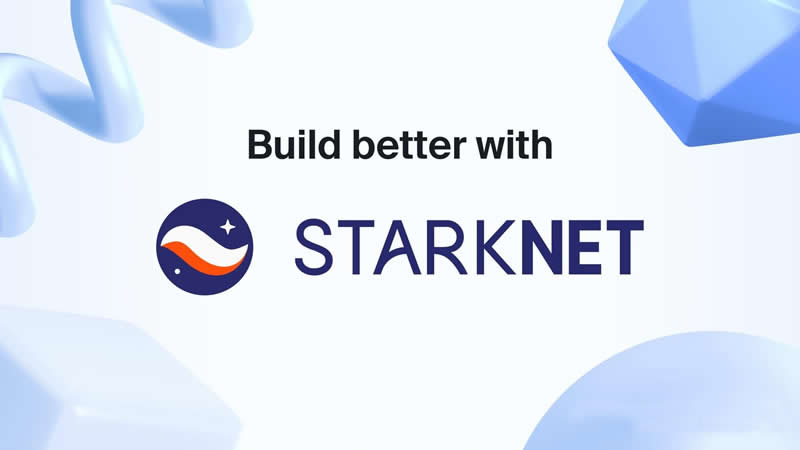How do you view the subsequent impact of the Starknet airdrop feast?
- WBOYWBOYWBOYWBOYWBOYWBOYWBOYWBOYWBOYWBOYWBOYWBOYWBforward
- 2024-02-20 15:21:02708browse

In the past two days, @Starknet has implemented a super large airdrop operation targeting 1.3 million addresses with a total amount of over 700 million pieces. It has almost taken care of everyone participating in the ecology at all levels. The elements are well organized! So, how do you view the subsequent impact of this Starknet airdrop feast? Let me talk about my thoughts:
1) The standards, scale and coverage of airdrops issued by Starknet have always been laggards. Various scandals and rumors continue. Many people even thought that they would be collectively "repulsed" Under this background, the sudden announcement of Eligible with over 1.3 million addresses and 700 million STRK has made many people overjoyed.
To be honest, as a popular project that has been heavily criticized, Starknet’s airdrop standard design is really difficult to deal with. It needs to balance the interests of all parties and avoid the selling pressure of the airdrop from overpowering the incentive effect, so it is very difficult. Absolutely satisfactory results. In the end, Starknet chose to provide a large-scale favor to early ECMP contributors, GitHub open source developers, Starknet users, etc.
This is likely to be the final choice for focus projects such as zkSync and LayerZero. When the brand influence reaches a certain level, the sun-drenched airdrop operation is the most sensible. The difference lies in which hair-pullers will be screened out according to what criteria, and which direction will become the project party’s preference? For example, Starknet clearly prefers developers and early ECMP contributor groups. At best, the "hair-raising" business has increased risks and lost the cost-effectiveness of input and output, and it will continue to be rolled out.

2) Previously, I have published an article saying that Starknet’s airdrop is a “redemption action”. The reason is that the ZK series layer2 project has stayed in the narrative of technical advantages for a long time. At this stage, the comprehensive data indicators of developer resources, ecological projects, market TVL, user volume, user experience, etc. are far less than expected. In this case, the purpose of bringing out the trump card of Tokenomics is more to further build and strengthen the ecological market. Obviously, both Starknet and zkSync are worried about this.
In particular, the overall lock-up data of layer2 exceeds 25.5B, and the proportion of layer2 among the top 5 brands in terms of brand reputation is less than 0.2B. How can such data give confidence to subsequent secondary market investors? ? And issuing Tokens to subsidize developers and users can quickly make up for this shortcoming. If you don’t believe that Tokenomics has such a great magic power, you can appreciate it by looking at Blast, which has already exceeded US$1.8 billion in TVL before the technology has been implemented.
I personally believe that Tokenomics will bring continuous power to the ecology of the ZK system, especially STRK will participate in project development and user interactive experience as a Gas fee subsidy, which brings great development potential to the project .
3) The Cancun upgrade has a significantly greater market boost for ZK-Rollup than OP-Rollup. If the Cancun upgrade is the icing on the cake for OP-Rollup, then it must be a timely help for ZK-Rollup. I have analyzed the reason before. With the same Blob block capacity, ZK series layer 2 can enlarge the upper limit of layer 2 TPS, thereby reducing the gas amortization cost. Coupled with the potential gas subsidy war, in theory, there will be more developers and users pour into the ZK ecosystem to build. Under normal circumstances, the Cancun upgrade will be a turning point for the ZK ecosystem to catch up in all aspects and counterattack OP.
Starknet rushed to launch Tokenomics before the Cancun upgrade, which undoubtedly expressed its determination to fight against the odds after the Cancun upgrade. If Starknet’s Token Economics works, it will inevitably promote the issuance of Tokens for ZK projects such as zkSync, Scroll, and Linea. Moreover, the potential of ZK technology is ultimately driven by "applications". The market needs to have several popular applications such as games to drive further prosperity of the Starknet market ecosystem.
4) The current layer 2 competition landscape has become complex and anxious. In the past, layer projects with first-mover advantages such as technology and brand reputation represented by Arbitrum, Starknet, zkSync, etc. There is pressure to meet expectations, and Stack's strategic approach is still the traditional To B VC narrative thinking, which is obviously not attractive enough to attract secondary market investors;
At the same time, a large number of people have emerged trying to break through New challengers in the layer 2 structure, such as Metis, have come up with decentralized Sequencer and the native Token economy to try to overtake them. Manta, ZKFair, Blast, etc. are all trying to use the power of market, operation and maintenance, and capital to counterattack.
In addition, Celestia, Altlayer, Espresso, etc. use modular thinking to continue to add new variables to the layer2 market. The current layer 2 market can no longer use established advantages such as technical strength and capital background to lock in market position. Under the successive waves of market impact and competition, the final survivors must be layer 2 projects with balanced comprehensive strength in all aspects. Within a year after the upgrade in Cancun, market competition will become more intense, and there may be four new layer 2 kings born by then.
Note: I was lucky enough to receive the ECMP airdrop, which is an incentive to continue to output valuable content. Anyway, everyone should have more confidence and expectations in the layer2 market.
The above is the detailed content of How do you view the subsequent impact of the Starknet airdrop feast?. For more information, please follow other related articles on the PHP Chinese website!

